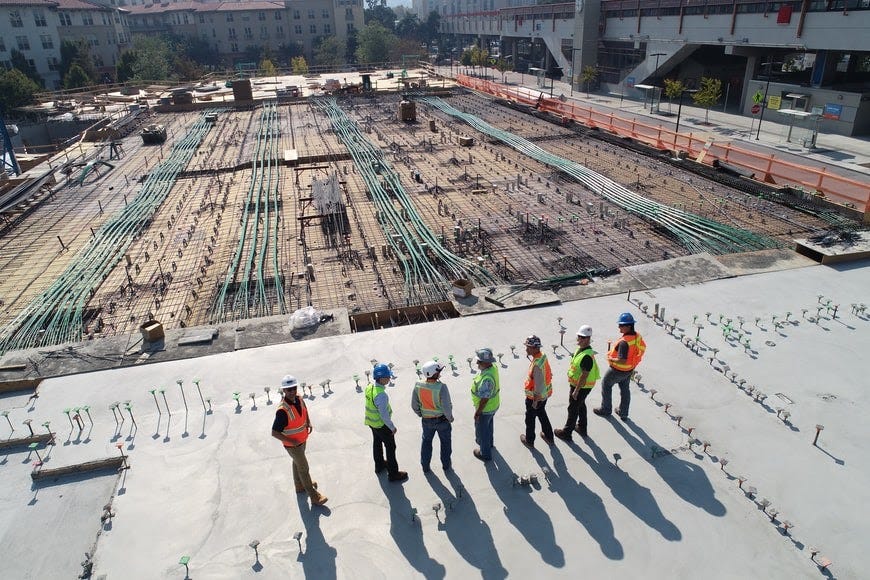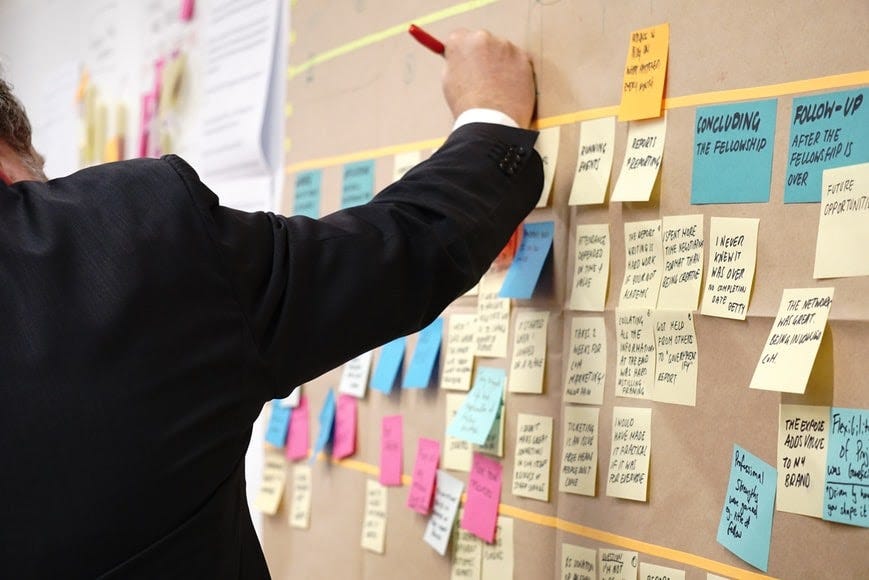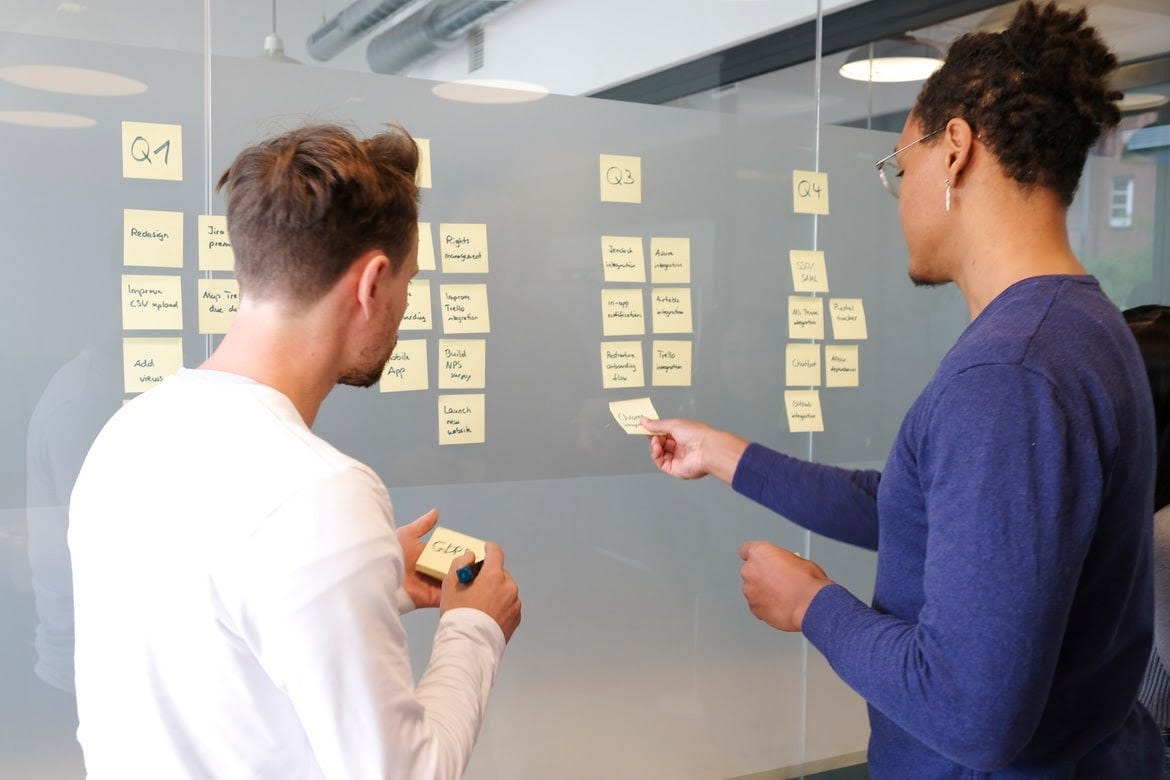Project management is the application of processes, methods, knowledge, skills, and experience to achieve specific goals and meet specific success criteria.
Companies with strong project management practices enjoy a number of benefits, including increased efficiency, improved customer satisfaction, and reduced costs. Those that neglect project management, on the other hand, often find themselves struggling to meet deadlines and dealing with dissatisfied customers.
In order to get the most out of project management, it’s important to develop a rounded understanding of the key concepts and principles involved. The following article will provide a basic overview of some of the most important project management concepts.
In particular, we’ll cover:
The Project Lifecycle
Project management is a cyclical process that begins with the identification of project goals and ends with the completion of the project and the achievement of its objectives. The cycle is divided into five phases: initiation, planning, execution, monitoring and control, and closure.
The Different Types of Projects
Not all projects are created equal. In order to be successful, project managers need to be aware of the different types of projects and the unique challenges they present. The three most common types of projects are operational projects, transitional projects, and transformational projects.
Tracking Project Progress
In order to ensure that projects stay on track, it is essential to track their progress. This can be done through a variety of methods, including time tracking software, Gantt charts, strong internal systems, and milestone charts.
Managing Risk
Risk is an inherent part of any project and must be managed accordingly. There are a number of risk management techniques that can be used, including risk identification, risk assessment, and risk response planning.
Ready to learn the basics of project management? Let’s get started!

The Project Lifecycle
To begin, any exploration of project management must start with an understanding of the project lifecycle. The project lifecycle is a representation of the sequence of steps that a project goes through from beginning to end.
Typically, there are five phases in the project lifecycle: initiation, planning, execution, monitoring and control, and closure.
Initiation is the first phase, and it is where the project is conceived. In this step, the project manager determines whether or not to proceed with the project and if so, creates a project charter that outlines the high-level goals of the project. Such a project charter is important because it provides a framework for decision-making as the project moves forward.
The second phase is planning, where the project manager and team work together to create a detailed plan for executing the project. This plan will include a schedule, budget, and other key details. The goal of this phase is to ensure that the project is executed as efficiently as possible and that all stakeholders are aware of what is expected of them.
Execution is the third phase, and it is where the project team actually carries out the plan created in the planning phase. This phase can be broken down into several sub-phases, such as design, development, testing, and implementation. The goal of this phase is to ensure that the project is completed on time and within budget.
The fourth phase is monitoring and control, which is where the project manager and team track the progress of the project and make any necessary adjustments. This phase is critical in ensuring that the project stays on track and meets its objectives.
Finally, closure is the fifth and final phase of the project lifecycle. In this phase, the project team wraps up all remaining work and formally closes the project. This usually includes issuing a final report documenting what was accomplished and any lessons learned.

The 3 Different Types of Projects
Projects are generally broken down into three categories: operational, transitional, and transformational. Understanding the different types of projects and what is required to manage them can help you better manage your own projects.
Operational Projects
An operational project supports the ongoing operations of a business. These are typically smaller projects that have a defined start and end date, and tasks that need to be completed in order for the project to be successful. Operational projects may include things like updating a company website or creating a new process for order fulfillment.
Transitional Projects
Transitional projects help businesses transition from one state to another. They can be either large or small and have a definite beginning and end. Tasks completed during a transitional project often create the foundation for the new state. A company’s move to a new office is an example of a transitional project.
Transformational Projects
Transformational projects are those that fundamentally change how a business operates. They are typically large, complex projects with many tasks and stakeholders.
Transformational projects can take months or even years to complete, and the outcome can be either positive or negative. The development of a new product, or orienting the company in a new direction, are both examples of transformational projects.

Tracking Project Progress
The third step in any successful project management process is tracking project progress. This includes creating regular reports on how the project is proceeding and identifying any potential problems so that they can be addressed quickly.
It is important to track both the schedule and the budget of the project to ensure that it remains on track. If either one starts to slip, then steps need to be taken to get them back on track.
Project managers also need to keep a close eye on the team members working on the project, making sure that everyone is pulling their weight and that no one is becoming overloaded.
There are several ways you can track project progress, including using a project management software package, creating charts and graphs, or using a Gantt chart.
At Day.io, for example, we prefer our built-in time tracking tool to monitor and update employee progress over time. Our software lets us automatically manage time spent on particular tasks, clients, and projects, and we can use this information to automate our payment pipeline, saving us time and money.
Milestone charts are another fantastic way to track project progress. They’re essentially a table that shows each milestone in the project, what tasks need to be completed for that milestone, and what the deadline is. This allows you to easily see which tasks are on track and which ones are behind schedule.
It also makes it easy to identify any potential roadblocks in the project. You can create milestone charts in a number of different programs, such as Excel or Google Sheets.
Whichever method you choose, it is important to be able to quickly and easily track the progress of the project so that you can make any necessary adjustments. Make sure to also keep a backup of all your progress reports, as they can come in handy later on if there are any problems with the project.

Managing Risk
Lastly, risk management is a critical piece of managing performance and task completion. Risk is an inherent part of any project, and it’s important to identify potential risks and create a plan to mitigate them. There are many different types of risk that can impact a project, including financial risk, technical risk, and schedule risk.
Financial risk refers to the potential for losses or reduced profits due to factors such as market volatility or changes in interest rates. Technical risk is the possibility that a project will experience setbacks due to technology issues. Schedule risk is the chance that a project will not be completed on time or within budget.
It’s well understood that managing a project is impossible without first managing its risk. Risk management is thus an ongoing process that should be revisited regularly throughout the life of a project. The goal is to keep risk to a manageable level so that it doesn’t jeopardize the success of the project.
Developing strong project management skills
Becoming a project manager is a journey. It takes time, practice, and experience to develop strong project management skills. The basics of project management, however, can be learned relatively quickly. If you’re looking to become a project manager, or just want to improve your skills, understand the aforementioned basics and keep the following in mind:
1. Projects are unique and require a tailored approach.
There is no one-size-fits-all solution to project management. Every project is different, with its own specific set of requirements, constraints, and stakeholders. As such, it’s important to tailor your approach to fit the individual project.
2. Projects require a clear goal.
Without a clear goal, it’s difficult to determine whether a project is successful or not. As such, it’s important to establish and communicate the project’s objectives from the outset.
3. Projects require a plan.
A well-developed plan is essential for any successful project. The plan should outline how the goal will be achieved and should be tailored to the specific project.
In closing
In summary, project management is the process of planning, organizing, and managing resources to bring about the successful completion of specific project goals. It is a dynamic and fluid process that requires ongoing monitoring and adjustment to ensure that the project stays on track.
The basics of project management include the project lifecycle, the different types of projects, tracking project progress, and managing your risk.
Understanding these basics is essential for anyone who wants to work on or manage a project. By following the best practices of project management, you can ensure that your project is successful and meets all of its goals.

